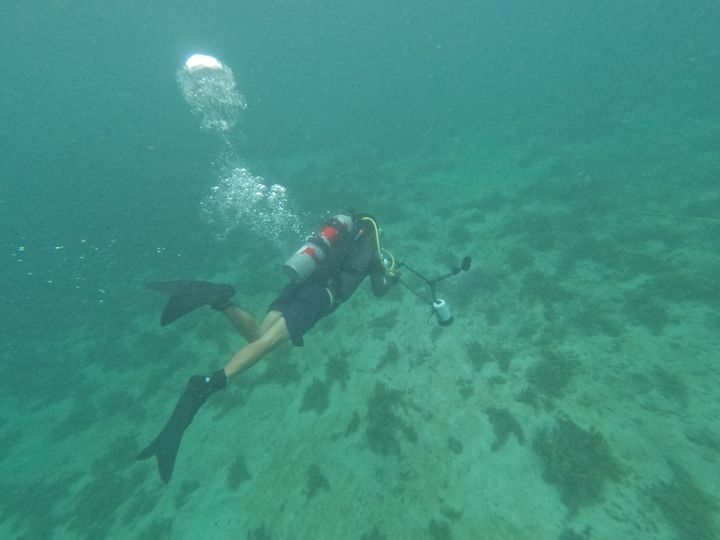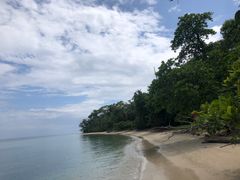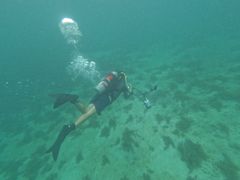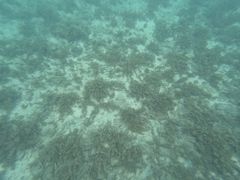Researchers to investigate whether Costa Rica shipwrecks are Danish slave ships
In the next few days, marine archaeologists from the Viking Ship Museum and the National Museum of Denmark will be diving down to the remains of two ships off the coast of Costa Rica. The investigation seeks to determine whether these are the wrecks of two 18th-century Danish slave ships.

The marine archaeological investigations will make it possible, for the first time, to document whether the ships are Danish. Samples will be taken from both the ships’ timber and the bricks that were part of the cargo more than 300 years ago. The work is a collaboration between Costa Rica and Denmark.
“We have known the history and location of the ships for several years, but this is the very first opportunity we have had to actually take a substantial amount of samples, which can hopefully document the origin of the ships, thereby expanding our knowledge of the history of Denmark and Costa Rica,” says the leader of the project, David John Gregory, senior researcher, adjunct professor and marine archaeologist at the National Museum of Denmark.
Costa Rica has known for some time about the two shipwrecks, which are located in shallow waters off the coast of the country in Cahuita National Park. For many years they were believed to be pirate ships. But in 2015, the discovery by US marine archaeologists of yellow bricks on one of the wrecks gave rise to new questions about the history of the ships.
Andreas Kallmeyer Bloch, a marine archaeologist and curator at the Viking Ship Museum, has been working to determine the origin of the ships for several years.
“We have worked hard to reach this point and we are very pleased that, hopefully, we can now identify the shipwrecks. This is the first time that an excavation has been made underwater in Costa Rica, which is why we are assisting. Costa Rica does not have its own marine archaeologists, but we have been working in this field in Denmark for many years,” says Andreas Kallmeyer Bloch.
It was the discovery of yellow bricks in one of the shipwrecks that aroused the researchers’ interest. These bore remarkable similarities to bricks manufactured in Flensburg for use in Denmark and the Danish colonies in the 18th and 19th century. In other European countries, different bricks were fashionable for construction.
The impending investigation of bricks and timber from the ships will help determine whether the wrecks are the remains of the two Danish slave ships, Fridericus Quartus and Christianus Quintus, which, according to historical sources, sank off the coast of Central America in 1710.
Rebellion and dramatic shipwrecks
Written sources tell us that in 1708 the two Danish ships sailed from Copenhagen via West Africa towards Saint Thomas in the West Indies.
Over several months of sailing along the coast of West Africa, the holds of the ships were filled with hundreds of slaves and made ready for the long voyage across the Atlantic.
In the spring of 1710, the two ships were in the Caribbean Sea. During the voyage across the Atlantic, however, they had gone off course. They sailed nearly 2,000 kilometres further west than their intended destination – the Caribbean Island colony of Saint Thomas in the Danish West Indies.
Food and water rations were running low on the ships; the situation was desperate and the crews of the two ships mutinied.
Fridericus Quartus was set on fire. Christianus Quintus had its anchor cut, after which the ship sank in the surf. However, exactly where and how this happened is still unclear.
The voyage from Copenhagen via West Africa to Central America is well-documented. There are accounts of the journey in historical archives, not only in Denmark, but also in Spain and Central America. There are also accounts by crew members who survived the ordeal and subsequently returned to Denmark or Norway, where they recounted their version of the incident to the royal tribunal. These files still exist in Denmark’s colonial archives.
If it is confirmed that these wrecks are the remains of the Danish ships, the project will form the basis for exploring the dramatic story of the two slave ships and the people whose fate was linked to them.
The investigations represent a collaboration between the two National Museums in Costa Rica and Denmark, the Viking Ship Museum in Roskilde, the Archaeological Commission of Costa Rica, the government body SINAC (Sistema Nacional de áreas de conservación Costa Rica) and Centro Comunitario de Buceo Embajadores y Embajadoras del Mar, a local NGO in Costa Rica.
Contact
The National Museum of Denmark via Cecilie Weinholt (Head of Communications) at cwe@natmus.dk or +45 41206017
The Viking Ship Museum via Rikke Johansen (Team Leader of Communication, Marketing and Sales) at rj@vikingeskibsmuseet.dk or +45 51208285
Keywords
Images
Subscribe to releases from Nationalmuseet - Museer, forskning og bevaring
Subscribe to all the latest releases from Nationalmuseet - Museer, forskning og bevaring by registering your e-mail address below. You can unsubscribe at any time.
Latest releases from Nationalmuseet - Museer, forskning og bevaring
Klimaengagerede unge sejler igen på tøjbyttetogt - besøger 13 byer30.6.2025 08:32:41 CEST | Pressemeddelelse
Nationalmuseets skonnert Bonavista er lastet med klimaengagerede unge og genbrugstøj og sejler rundt til 13 danske byer, hvor der bliver opstillet til tøjbyttemarked.
Anders Foghs jakkesæt fra malingangreb kommer på Nationalmuseet3.6.2025 05:30:00 CEST | Pressemeddelelse
Den tidligere statsministers jakkesæt fra malingangrebet i 2003 kommer nu på Nationalmuseet og bliver en del af den danske kulturarv. Genstanden vidner om forandret politisk aktivisme i Danmark i forbindelse med vores militære engagement i udlandet.
’Arkæologiens Oscar’ går til sønderjysk arkæolog23.5.2025 16:14:10 CEST | Pressemeddelelse
Erik Westerby-prisen går i år til Lennart Secher Madsen, arkæolog ved Museum Sønderjylland, for sit lange, seje træk i arkæologiens tjeneste og for at fremhæve Sønderjyllands særlige status. Lektor Tim Flohr får rejselegat for sin utraditionelle, men inspirerende tilgang til arkæologien.
New research: Baby toys were mass produced in Early Bronze Age Syria19.5.2025 08:52:49 CEST | Pressemeddelelse
Scholars at the National Museum of Denmark in collaboration with Archéorient CNRS in France and the University of Milan in Italy have identified 4500-year-old baby rattles that were produced by professional potters in an ancient city in Syria. They were probably sold at the market to parents who wanted to entertain – or distract – their children.
Ny forskning: Baby-legetøj blev masseproduceret i oldtiden19.5.2025 08:52:17 CEST | Pressemeddelelse
Forskere på Nationalmuseet har identificeret 4.500 år gamle baby-rangler, som blev produceret af professionelle pottemagere i en oldtidsby i Syrien. De blev formentlig solgt på markedet til forældre, der ville forkæle – eller distrahere – deres børn.
In our pressroom you can read all our latest releases, find our press contacts, images, documents and other relevant information about us.
Visit our pressroom


